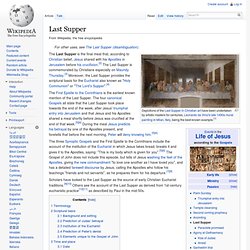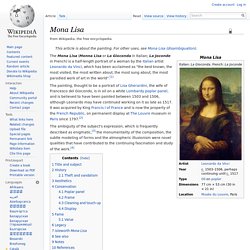

Leonardo da Vinci. Leonardo is revered for his technological ingenuity.

He conceptualised flying machines, an armoured vehicle, concentrated solar power, an adding machine,[7] and the double hull, also outlining a rudimentary theory of plate tectonics. Relatively few of his designs were constructed or were even feasible during his lifetime,[nb 2] but some of his smaller inventions, such as an automated bobbin winder and a machine for testing the tensile strength of wire, entered the world of manufacturing unheralded. [nb 3] He made substantial discoveries in anatomy, civil engineering, optics, and hydrodynamics, but he did not publish his findings and they had no direct influence on later science.[8] Life Childhood, 1452–1466 Leonardo's earliest known drawing, the Arno Valley (1473), Uffizi Verrocchio's workshop, 1466–1476 Professional life, 1476–1513 In 1482 Leonardo, who according to Vasari was a most talented musician,[25] created a silver lyre in the shape of a horse's head.
Old age, 1513–1519 Personal life. Last Supper. The First Epistle to the Corinthians is the earliest known mention of the Last Supper.

The four canonical Gospels all state that the Last Supper took place towards the end of the week, after Jesus' triumphal entry into Jerusalem and that Jesus and his Apostles shared a meal shortly before Jesus was crucified at the end of that week.[5][6] During the meal Jesus predicts his betrayal by one of the Apostles present, and foretells that before the next morning, Peter will deny knowing him.[5][6] Scholars have looked to the Last Supper as the source of early Christian Eucharist traditions.[9][10] Others see the account of the Last Supper as derived from 1st-century eucharistic practice[10][11] as described by Paul in the mid-50s. Terminology[edit] The term "Last Supper" does not appear in the New Testament,[12][13] but traditionally many Christians refer to the New Testament accounts of the last meal Jesus shared with his Apostles as the "Last Supper".[13] Scriptural basis[edit] Date[edit]
Mona Lisa. The Mona Lisa (Monna Lisa or La Gioconda in Italian; La Joconde in French) is a half-length portrait of a woman by the Italian artist Leonardo da Vinci, which has been acclaimed as "the best known, the most visited, the most written about, the most sung about, the most parodied work of art in the world".[1] The painting, thought to be a portrait of Lisa Gherardini, the wife of Francesco del Giocondo, is in oil on a white Lombardy poplar panel, and is believed to have been painted between 1503 and 1506, although Leonardo may have continued working on it as late as 1517.

It was acquired by King Francis I of France and is now the property of the French Republic, on permanent display at The Louvre museum in Paris since 1797.[2] Title and subject Vasari's account of the Mona Lisa comes from his biography of Leonardo published in 1550, 31 years after the artist's death, and which has long been the best known source of information on the provenance of the work and identity of the sitter.
History. Leonardo da Vinci. Leonardo @ the Museum | Renaissance Man | Exploring Leonardo | Multimedia Zone | Museum of Science.
